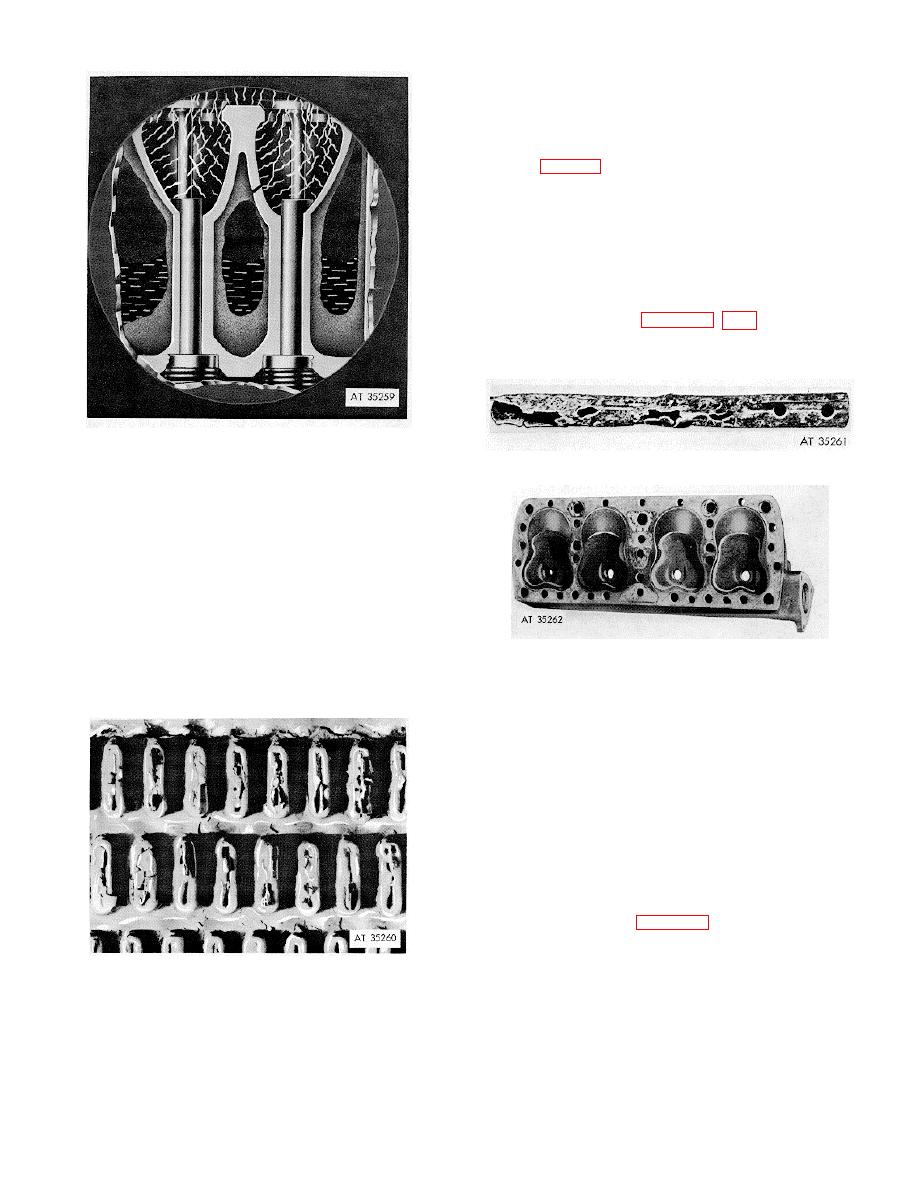 |
|||
|
|
|||
|
Page Title:
Figure 2-15. Heat cracking at valve seat from rust clogging |
|
||
| ||||||||||
|
|
 d. Corrosion Damage Although a less common
cause of trouble than rust clogging, corrosion damage to
metal parts can be equally serious. For example, when a
water distribution tube in the block becomes perforated by
corrosion (fig 2-16), coolant distribution in the water jacket
is completely upset. Some valve and cylinders will be
robbed of proper circulation and cooling, and hot spots,
overheating sticking valves, and even heat-cracking may
follow. Corrosion prevention is especially Important for
such parts which are so completely hidden within the
engine that preventive inspection is Impractical and
detection of failure is difficult. Among other metal parts
sometimes damaged by corrosion are radiators, water
pumps, cylinder heads (figs 2-17, 2-18) and core hole
plugs. Thin metal parts are weakened by corrosion and
crack more easily when subjected to vibration and strain.
Figure 2-15. Heat cracking at valve seat from rust
clogging.
Figure 2-17. Corroded water distributor tube showing
irregular corrosion holes.
(2) Radiator clogging. Rust deposits have their most
harmful effects In the radiator. Even a small amount of
fine rust particles continually circulating through the
radiator has a tendency to plate out in he form of a thin,
hard scale on the inside of the narrow water tubes (fig. 2-
16). This scale first reduces cooling efficiency of the
radiator by Insulating tubes from coolant. As more rust
becomes lodged n tubes, circulation is restricted and
clogging may progress to the point where coolant will be
forced out he overflow pipe. When boiling starts, large
Figure 2-18. Aluminum cylinder head showing corrosion
amounts of rust are stirred up in the water Jacket and
damage.
carried over into the radiator to completely plug tubes.
Further operation of the vehicle will result In serious
e. Importance of Rust Prevention. A rusty cooling
overheating, loss of power, and engine damage.
system may seem to function satisfactorily under
moderate operating conditions, but will fall to cool the
engine under more severe conditions, often at the time
when full power output is most urgently needed. The
system can be kept practically rust-free, and loss of
cooling efficiency from rust formation can be avoided by
periodic corrosion-prevention services.
2-17.
Prevention of Rust and Corrosion
a. Inhibitors. Protection of the cooling system
against rust and corrosion is accomplished by adding
inhibitor to the coolant (para 2-32). Laboratory tests show
that a corrosion inhibitor in water reduces the normal
rusting of iron at least 95 percent.
Figure 2-16. Rust clogging of water passages in tubular
radiator core.
2-13
|
|
Privacy Statement - Press Release - Copyright Information. - Contact Us |